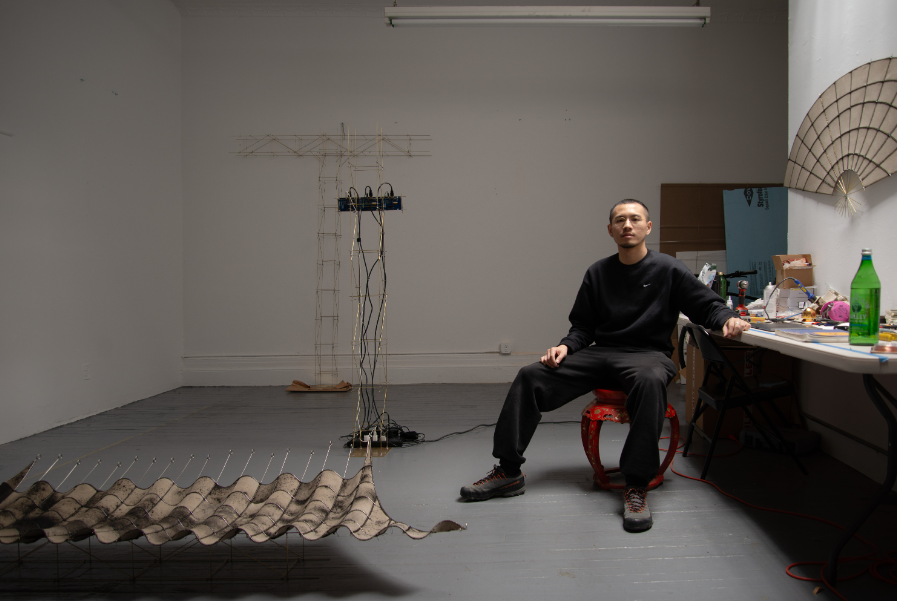
AGE: 30
BASED: New York
Giacomo Puccini’s 1924 opera Turandot may seem like unlikely source material for a 30-year-old artist.
For Covey Gong, the opera—set in a mythical Peking laden with gilded chinoiserie, featuring characters with nonsensical “Chinese” names—has proven to be fruitful, if unsettling, terrain. “The set objects were ‘Chinese-looking,’ but they don’t have an actual reference. It’s just an Orientalist construction,” the Hunan-born, New York–based sculptor tells me.
Earlier this year, Gong exhibited a suite of works inspired by the opera as part of a solo show at New York’s SculptureCenter. The artist took familiar motifs—a fan, a sloping roof, a tiered stage—and translated them into delicate, skeletal forms, interrogating and reconstituting their authenticity in the process. “I think of theater sets as objects that project a certain fantasy of a place or a narrative,” he says. “Sculpture has a similar effect; it embodies something outside of itself.”
Gong grew up during an era of great change in his home country. “Government policy was relatively open in the ’90s,” he explains. “Everyone was very hopeful—all of my family members planted their hope in me in some ways.” Gong says the SculptureCenter pieces were designed to be “like Legos”—easily broken down into individual pieces, transported, and assembled on-site. This choice was in part an economic one: Gong doesn’t have a studio, per se. Instead, he rents a shared workspace for $280 a month. “It’s hard for me to make a lot of work there,” he says. “But since I don’t have a studio, I don’t have to commit myself to a certain medium or way of making.”
The artist’s lack of studio space also reflects the level of transience in his own life. “I don’t really have roots in America; there’s no family there,” Gong shares over the phone from Beijing. Indeed, 2025 will see Gong traveling to and from East Asia—first for a presentation at Empty Gallery’s Room of Spirit and Time in Hong Kong, and later for a solo exhibition with Antenna Space’s new project space, Antenna-tenna, in Shanghai. “It’s kind of strange, to go back and forth,” he says. “I think that experience informs these objects.”










 in your life?
in your life?

